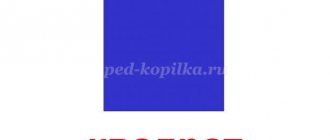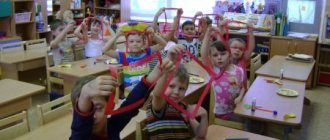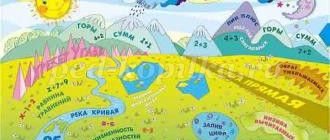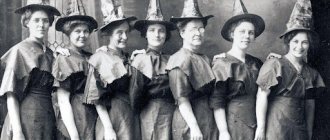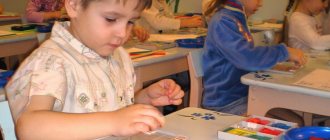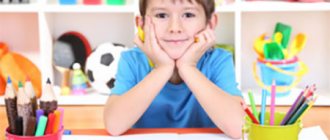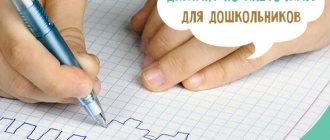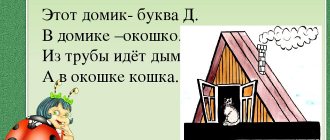Why study geometric shapes with your baby?
- Geometric shapes are found everywhere; they can be seen in most objects around us: a round ball, a rectangular table, etc. By analyzing the similarity of surrounding objects with geometric shapes, the child wonderfully trains associative and spatial thinking.
- Studying geometric shapes is useful for the overall development of the baby and expanding his knowledge about the world around him. If you introduce your child to shapes at an early age, he will have a much easier time at school.
- Many interesting educational games are based on the ability to distinguish geometric shapes. This includes construction, games with sorters, mosaics, math tablets, Dienesh blocks, etc. Therefore, studying forms at such an early age will contribute to the further successful development of the child.
So, games for learning and consolidating knowledge about geometric shapes :
We act in stages
So, geometric shapes are important for the development of children. To master them successfully, you should use the following rules.
- We begin our acquaintance with the simplest shapes (these will be a circle, a triangle and a square).
- At the initial stage, it is better that all the figures are the same color and size, so as not to distract the baby with unnecessary details.
- We remember about age (at 2 years old we master only the circle, square and triangle; by 3 years old we add an oval, rhombus, rectangle; by 4 years old - a trapezoid, star, pentagons or hexagons).
- Training should be multifaceted so that the child constantly consolidates the acquired skills (we trace the shape with our fingers, learn to find shapes around and distinguish, sort them by type, size, create and analyze applications, sculpt, cut out, play with cards or lotto, consolidate shapes in active games ).
Start studying with flat images, gradually showing your child the difference between plane and volume, teaching him to compare a three-dimensional geometric body with its flat image.
We name geometric shapes always and everywhere
If you come across any figure while playing or reading books, be sure to draw your baby’s attention to it and name it (“Look, the ball looks like a circle, and the cube looks like a square”). Even if it seems to you that the child is unlikely to remember the names of the figures, say them anyway, and they will definitely be imprinted in his head. You can do this for up to a year. At first, point out only the basic shapes (square, circle, triangle), then, when you understand that the baby has mastered them, begin to study other shapes.
Developmental lesson “These wonderful figures” lesson plan
Developmental activity for preschool children
"These wonderful figures."
(prepared by teacher - psychologist of St. Petersburg State Budgetary Institution SON "Center for Social Assistance to Families and Children of the Kalinin District" Shabaikina A.S.)
Goal: Consolidate knowledge about geometric shapes.
Tasks:
- Continue to teach children to name the shape of figures (circle, square, oval, rhombus, triangle, rectangle);
- Develop the ability to correlate a figure with a specific color;
- Create conditions for the development of imagination, thinking, fine motor skills;
- Teach to see geometric shapes in surrounding objects;
- To consolidate the formation of spatio-temporal concepts;
Materials:
- a set of colored geometric shapes (circle, square, rhombus, triangle, oval, rectangle) 1 more than the number of participants;
- pictures depicting objects: wardrobe, ball, window, cucumber, kite, etc. (for the game “What figure does it look like...”);
- A set of geometric shapes of different sizes and colors according to the number of participants (for the game “Builder”);
Progress of the lesson.
I. Introductory part.
- Hello guys! Are you very glad to see you again? Are you glad to meet us? (children answer). Who can remind me what day of the week it is? ..And the date?.. What part of the day is it morning or evening?... And outside the window, what time of year is it now?.. Well done! How do you determine what is outside the window...? Let's name the signs one by one... (children answer). Great! Well done!
II. Main part.
Game "Riddles"
Guys, today we have a very interesting, unusual activity ahead of us. Unusual guests will come to us, but when they come, you will find out if you guess my riddles.
| I have no corners and I look like a saucer, like a medal, like a pancake, like an aspen leaf. I am an old friend to people. They call me...Circle | He stood square on the corner and poked his nose into the ceiling. It grew upward for another five days. What should we call it now? Rhombus |
| I am neither an oval nor a circle, I am a friend to the triangle, I am a brother to the rectangle, After all, my name is... Square | Three peaks are visible here, Three corners, three sides - Well, perhaps that’s enough! - What do you see? - …Triangle |
| Trace the whole brick with chalk on the asphalt, And you will get a figure - You, of course, are familiar with it. Rectangle | He looks like an egg Or on your face. This is the circle - Very strange appearance: The circle became flattened. Suddenly it turned out... (oval) |
| And my brother, Seryozha, Mathematician and draftsman - On Baba Shura’s table, Draws all sorts of...Figures |
Well done! Great! Who can tell me who came to visit us today? …. Right! These are geometric shapes. (As the riddles are solved, the teacher puts the figures on the board for clarity).
Guys, please note that each figure has its own color, let's repeat the colors. Who can tell me what color our square is?... And the circle?.. Triangle?... Oval?... Rhombus?.... What about a rectangle? Great!
Game "Show the figure"
Now each of you will receive a set of figures, they are all different in shape and color. Look at them carefully and lay them out in front of you. We will perform the task at speed, I will tell you the figure, and you will have to find it and quickly lift it up. Ready? Let's start! ….
Great! And now I will name the color and if you have any figure of this color, then you quickly understand it up. Ready? Let's start!... Great! Well done. You did a great job!
- Now be careful. I will show you an object, and you must show me the figure that this object is similar to and name this figure. (A window is a square, a cucumber is an oval, an orange is a circle, a cap is a triangle, a closet is a rectangle, etc.). Great! Well done!
— Guys, please tell me, do you know who a builder is? (children answer). Yes, this is a man who builds houses. Now you and I will be builders. I will give each of you a set of geometric shapes, and you will need to create some kind of structure from them, maybe it will be an unusual house, maybe a car, or maybe a rocket. Let's try, I'm sure we'll do great. (the guys are designing). … Wonderful!
III. Completion.
- Guys, let's remember what we did today?
What did you like? What do you remember most?
Thank you. Today our guests were geometric shapes: circle, square, triangle, rectangle. We remembered their names, colors, and even became builders. You are all great fellows! See you again!
Let's play geometric lotto
With the help of lotto you can study anything: colors, geometric shapes, vegetables, animals, etc. And geometric lotto is also quite easy to make yourself: on a sheet of paper or cardboard we draw or print two identical sets of shapes, one of which we cut into cards. Everything is ready, you can play. Our lotto templates for learning geometric shapes can be used.
For the first lessons with your baby, it is better to use lotto, which has only 3-4 figures. When your child masters this game well, gradually complicate the task. It is also useful for the first time to make all the figures on the playing field the same color and size. In this case, the child will be guided by only one sign - shape, while other characteristics will neither distract nor prompt him.
You can place both cards with images of figures and three-dimensional figures on the playing field. Dienesh blocks (Ozon, KoroBoom), figures from a sorter, and insert frames are well suited for this purpose.
Well, the easiest option is to purchase a ready-made lotto with geometric shapes.
Learning geometric shapes with kids in preschool educational institutions
When studying geometric concepts, children also gain other knowledge and skills in parallel:
- they learn to think logically;
- get the opportunity to develop knowledge of the Russian language;
- the perception of space and the ability to navigate in it improves;
- children develop fine motor skills;
- Intellectual qualities develop: the ability to make comparisons, analyze, and generalize.
Note! When teaching in kindergarten, the development of geometric concepts is not highlighted as a separate topic, but occurs in combination with other topics.
Children learn geometry
Learning colors and shapes for children from 2 years old
Geometry learning should begin with the simplest figures; more complex ones should be left for subsequent years. It is believed that children are able to perceive shape on a subconscious level within six months after birth. At this time, the main way of teaching is through mention during the story. When showing pictures, you can casually notice that the objects depicted have a certain shape.
When teaching, you need to take into account that kids can only learn to distinguish between the simplest ones: circle, square and triangle.
Note! Studying in a year or two or three should be easy and fun. For mastering it is convenient to use three-dimensional figures. Studying, for example, a circle, you can imagine that he came to visit the baby. You can use your child's finger to trace a circle along the outline. You can make such an applique, decorating it with eyes and a nose.
Outdoor games for middle groups in kindergarten
A child can play with this item: make a tower by placing one on top of the other, throw it to the side or put it in a box.
This integrated approach to a geometric design project is very effective for toddlers, but for younger children it can be considered the primary way to learn shapes.
For children under two years of age, the following may be used:
- children's ability to compare objects;
- use a children's educational set, where you need to select a hole of a suitable shape and size for the figurine.
A two-year-old child is able to choose the appropriate shape from a set.
When they teach figures to 3-year-old children, they can already show the one that was named by the teacher.
Learning figures for children 3 years old
When teaching children geometric shapes, it is important to consolidate familiarity with the material that they have previously learned. We need to continue studying and move on to those that are more difficult to understand - oval, rhombus and rectangle.
When teaching children, you can show children examples of figures, letters of the alphabet and compare them with other objects in shape and size.
Important! During the walk, children are told about the objects they see, mentioning their shape and simple geometric properties.
An important role when teaching geometric shapes to children is played by creative activities, when children draw or sculpt samples and put them together from a given set of component parts.
Using cards depicting complex objects, the child is asked to talk about the components in the form of certain shapes.
Children education poster
Geometric shapes in the senior group
At this time, the lessons move on to considering new, more difficult to understand figures, repeating those that they should have known before.
In classes at the age of five, children are asked to consider and talk about their common and different properties. For example, questions are asked about where open figures have corners and in which cases they do not.
They try to teach children to analyze the complex shapes of real objects, to find elements in them that have the form of simple figures. They learn about more complex shapes, such as a cone.
Geometric shapes in the preparatory group
At this age, children have already mastered the basics of understanding the shapes of objects. At this stage, it is important to develop knowledge and make it more systematic. At this age, children develop a foundation for schooling.
Note! Children in the preparatory group, when introduced to polygons, are told about their sides and angles, and are taught to find the desired figure using a description.
Here is an example of an educational game that can be included in a lesson note and used for teaching. Children are given a set of figures. The player places one of them. Another should put next to it one that differs in only one attribute. For example, if one offers a large blue square, then the other may lay out a small blue square, a large yellow square, or a large blue circle.
The teacher tells the children about the figures
Playing with the sorter
At about the age of 1 year, the child begins to notice that the sorter figurine he has chosen (Ozone, Labyrinth, My-shop) cannot be pushed into every hole. Therefore, during the game it is necessary to focus on this: “So, here we have a circle - it doesn’t fit here, it doesn’t fit here, but where does it fit?” At first, turning the figure at the right angle may be a little difficult for the baby, but it’s not scary, it’s a matter of practice. The main thing is, do not forget to pronounce the names of the figures all the time during the exciting process of “pushing”, and the child will quietly remember them all.
Important! When choosing a sorter, pay attention to the fact that all the basic geometric shapes are represented there, and not just hearts and crescents.
Sorting geometric shapes
The process of sorting objects began to interest my daughter at the age of 1 year 4 months. We sorted items by color, size and, of course, shape. I think Taisiya really liked this game because we often involved her toy friends in it. As soon as the doll Masha was invited to play, for example, she immediately reported that she liked to play only with triangles, and the bear said that he only liked rectangles. So we had to carefully select the figures so as not to offend anyone :)
Let's draw
When drawing together with your child, do not forget to say the names of the shapes. “So, let’s draw a square, now a triangle - we get a house,” “Let’s draw a circle, an oval, a stick, a stick - we get a little man.”
From about 1.5 years old, the child can already be asked to trace figures using stencils. You can make the first stencils with geometric shapes yourself from thick cardboard, because... ready-made stencils, as a rule, are very small for the very first drawing experiments. I made the first stencils for Taisiya from a not very successful set of cards (the pictures were not very good, but the cardboard was excellent), four main figures were enough for us (the size of our stencils is 8x8 cm).
At the age of 2, Taisiya fell in love with drawing using small stencils (another option), and at this age we began to trace the outside of Dienesh blocks, it was no less interesting, although more difficult.
Methods for introducing preschoolers to geometric shapes. Article on mathematics
Methodology for introducing preschoolers to
geometric shapes.
In order for a child to confidently navigate the world around him, he must be able to distinguish objects by various characteristics, including shape.
From early childhood, the baby is surrounded by many objects. Some of them have the same shape, others have different shapes. In each age period, children’s perception of the shape of an object has its own characteristics. Until the age of three, children associate the sign of shape with a specific object. At the same time, children perceive geometric figures as ordinary objects and give them the names of those familiar objects that these figures resemble. For example, a triangular prism is called the roof of a house.
Up to three years of age, children are able to distinguish only geometric shapes that are contrasting in shape. At this age, it is necessary to give children the opportunity to perform various actions with objects in accordance with their shape. It is necessary to offer children a variety of games and exercises: “Roll the ball”, “Build a turret”, “Show the same figure”, “Wonderful bag”, “Each figure in its own house”. Games with parts from construction sets and geometric mosaics are useful and interesting for children. In all these games, the child explores geometric shapes by tactile-motor means, builds turrets from the shapes or rolls them, puts one shape on top of another, puts them side by side, and compares them. Thus, the baby gradually learns the characteristic features of geometric shapes.
Children begin to be interested in the name of this or that figure. Therefore, during such games, adults should unobtrusively call the “names” of geometric figures. For this purpose, at the first stage it is necessary to use both the names of objects familiar to children (for example, “egg”) and generally accepted geometric terms (“ovaloid”). Moreover, the usual name should be “invented” by the child himself, and not imposed on him by an adult.
Children do not have to repeat geometric terms after adults. When children play with objects, geometric figures, explore them, hear their names, they gradually accumulate the necessary experience and from the age of 3-4 are already able to distinguish geometric figures by their characteristic features and name.
In preschool age, it is important to introduce first into the passive and then into the active vocabulary of children the generally accepted names of those geometric figures whose shapes have surrounding objects (circle, square, triangle, rectangle, oval, rhombus, trapezoid, cylinder, cone, ovaloid, pyramid, prism (quadrangular and triangular).
When comparing figures with each other at the age of 3-5 years, children are able to identify such characteristic features of figures as: rolls - doesn’t roll, there are obstacles - no, you can build a turret - you can’t, different numbers of angles, etc.
At this age, the child no longer identifies geometric figures with objects, but only compares. Children are not yet able to generalize shapes by shape. This is hampered by such characteristics of figures as color, size, location in space, differences in the proportions of the sides and axes. Until the age of 5, it is difficult for them to distinguish between flat and three-dimensional figures that are similar in shape, although they can do this according to a model, for example, if you show a child an ovaloid and ask: “what is this?”, then, most likely, he will answer that “this is oval". But if you put an oval and an ovaloid next to each other and, showing another model of an ovaloid, ask the child to give the same figure, then he will make the right choice.
It should be noted that knowledge of the characteristic properties of geometric figures takes place over several stages. First, children are asked to compare this figure with a contrasting figure of the same volume, for example, a prism with a ball (or cylinder). With this comparison, it becomes clear whether the figure has obstacles (corners) or not, whether it rolls or not, whether a turret can be built or not. Then it is advisable to compare this figure with a figure of the same volume known to children that is similar in shape, for example, a general quadrangular prism with a cube.
At this stage, you can show children using a conditional measure that all sides (edges) of a cube have the same length, but in a general prism, neighboring edges (coming from the same vertex) have different lengths. At the next stage, figures that are even closer in shape are compared, for example, quadrangular and triangular prisms. To do this, you need to compare the shape of the base of the figure (quadrangle - triangle), the number of angles (eight - six). It can be shown that a tower can always be built from quadrangular prisms, but from triangular prisms only when they stand on a base, and if a triangular prism lies on its side, then it can be used as a roof for a house.
At the age of 5-6 years, children are already able to distinguish between flat and three-dimensional figures that are similar in shape. Therefore, at this stage it is proposed to compare figures of different volumes that are similar in shape. So, a cube is compared to a square. To do this, it is proposed to hide between straight palms (or palm and table surface) first a flat and then a three-dimensional figure. It turns out that the flat figure is hidden in the palms, but the three-dimensional figure is not hidden. For this purpose, you can suggest grouping figures during the game “Mail”: flat figures - “envelopes” - fit into the slot of the mailbox, but three-dimensional figures - “parcels” - do not fit.
Another method for comparing flat and three-dimensional shapes is to count the corners. Thus, a quadrangular prism has 8 angles, and a quadrilateral has 4. In addition, it is important to draw children’s attention to the fact that flat and three-dimensional figures are used in different types of constructive and visual activities. Moreover, in the process of appliqué and drawing, three-dimensional objects are depicted using corresponding flat figures. So, for example, the roof of a house, which has the shape of a triangular prism, is depicted in the figure as a triangle.
At the age of 5-7 years, children are able to perceive geometric figures as standards, using which people determine the shape of objects. At this stage, they are able to abstract the sign of shape from the objects themselves. This helps them realize the connection between the characteristic properties of a particular figure and its name. In order to teach how to generalize objects by shape, it is necessary to give children several models of the same geometric figure of different colors, sizes, with different proportions of parts, differently located in space. Kids are invited to examine these figures, find how they differ, what they have in common, and, finally, name this group of figures in one word. Then the children are given the following exercises:
say what all the proposed objects have in common (children must understand that, regardless of the most diverse characteristics, objects have the same shape);
find objects that have the named shape.
In this type of exercise, the teacher must ensure that children do not use the names of flat figures to indicate the shape of three-dimensional objects. There are two acceptable options for designating the shape of three-dimensional figures in speech:
using the names of volumetric figures (for example, “the cabinet is shaped like a prism”);
using double shape names (for example, “the cabinet has a voluminous rectangular shape”).
In the example under consideration, you cannot say: “The cabinet has the shape of a rectangle,” since the cabinet is a three-dimensional object, and a rectangle is flat
Source: https://vscolu.ru
We glue
You can use geometric shapes in appliqué classes from the very first lesson. When a baby is just getting acquainted with glue (in my opinion, familiarization goes well between the ages of 1 year and 2-3 months), he is more interested in the gluing process itself than in creating some kind of composition. Therefore, you should not create complex pictures in the first applications with your baby; start simply by chaotically gluing pieces of paper onto a piece of paper, or even better, by chaotically gluing geometric shapes! While the baby enthusiastically smears the figurine with glue (with your help) and places it on a piece of paper, you tell him what it is called. With such a game, all the names fit very well in the baby’s head, one might say, they “stick” firmly.
When the baby can already glue applique elements to given places (from about 1.5 years old), you can try to create a simple composition.
You can also use various ready-made aids in your classes, for example:
- School of the Seven Dwarfs 1+. Shape, color (Ozon, My-shop)
- Educational stickers for kids. Form (Ozon, My-shop)
- Wonderful stickers. Fun geometry (Ozon, My-shop)
Familiarizing children with geometric shapes and the shape of objects.
Familiarizing children with geometric shapes and the shape of objects.
School preparatory group.
Knowledge about geometric figures in the preparatory group is expanded, deepened and systematized.
One of the tasks of the school preparatory group is to introduce children to the features of polygons: vertices, sides, angles.
Solving this problem will allow children to come to a generalization: all figures that have three or more angles, vertices, and sides belong to the group of polygons.
Children are shown a model of a circle and a new figure - a pentagon (Fig. 37). They offer to compare them and find out how these figures differ. The figure on the right differs from a circle in that it has angles, many angles. Children are encouraged to roll a circle and try to roll a polygon. It doesn't roll on the table. The corners interfere with this. They count the angles, sides, vertices and determine why this figure is called a polygon. A poster is then shown showing various polygons. Individual figures are identified with their characteristic features. All figures have many sides, vertices, and angles. How can you call all these figures in one word? And if the children don’t guess, the teacher helps them.
To clarify knowledge about the polygon, tasks can be given to sketch figures on checkered paper. Then you can show different ways to transform shapes: cut or bend the corners of a square and get an octagon. By placing two squares on top of each other, you can get an eight-pointed star.
Children's exercises with geometric figures, as in the previous group, consist of identifying them by color, size in different spatial positions. Children count vertices, angles and sides, order shapes by size, and group by shape, color and size. They must not only distinguish, but also depict these figures, knowing their properties and features. For example, a teacher asks children to draw two squares on checkered paper: one square should have sides that are four squares long, and the other two squares longer.
After sketching these figures, children are asked to divide the squares in half, and in one square connect two opposite sides with a segment, and in the other square connect two opposite vertices; tell how many parts the square was divided into and what shapes were obtained, name each of them. In this task, counting and measurement are simultaneously combined with conventional measures (the length of the side of the cell), figures of different sizes are reproduced based on knowledge of their properties, figures are identified and named after dividing the square into parts (whole and parts).
According to the program, children in the preparatory group should continue to teach how to transform shapes. This work contributes, on the one hand, to the knowledge of figures and their characteristics, and on the other hand, develops constructive and geometric thinking. The techniques for this work are varied. Some of them are aimed at getting to know new shapes when dividing them into parts, others - at creating new shapes when combining them.
Children are asked to fold a square in half in two ways: by combining opposite sides or opposite corners - and say what shapes are obtained after folding (two rectangles or two triangles).
You can suggest finding out what shapes turned out when the rectangle was divided into parts (Fig. 39), and how many shapes there are now (one rectangle, and there are three triangles in it). Of particular interest to children are entertaining exercises for transforming shapes.
So, the analytical perception of geometric figures develops in children the ability to more accurately perceive the shape of surrounding objects and reproduce objects when practicing drawing, modeling, and appliqué.
By analyzing the different qualities of the structural elements of geometric figures, children learn what the figures have in common. So, the guys learn that some figures find themselves in a subordinate relationship; the concept of a quadrilateral is a generalization of such concepts as “square”, “rhombus”, “rectangle”, “trapezoid”, etc.; the concept of “polygon” includes all triangles, quadrangles, pentagons, hexagons, regardless of their size and type. Such connections and generalizations, which are quite accessible to children, raise their mental development to a new level. Children develop cognitive activity, form new interests, develop attention, observation, speech and thinking and its components (analysis, synthesis, generalization and concretization in their unity). All this prepares children to master scientific concepts in school.
The connection of quantitative concepts with the concepts of geometric figures creates the basis for the general mathematical development of children.
Methods for forming ideas about the size of objects in children in kindergarten
When forming ideas about the size of objects, special didactic material is used. In the second younger group, it is enough to take two objects for comparison, asking children to determine both the absolute (long - short) and relative value (longer - shorter). The main requirement for didactic material in this group is that the property being compared must be clearly expressed and really characterize the subject.
In the first lessons, it is preferable to use flat objects, gradually expanding their circle, in order to form in children a generalized idea that when comparing any objects of different lengths, they are defined as long - short, longer - shorter; different widths - wide - narrow, wider - narrower, etc. It should be borne in mind that different colors make it possible to highlight the size, so first you need to offer multi-colored objects for comparison. At each lesson, children should be given the opportunity to act with handout material (strips of paper of different lengths with equal widths and, conversely, different widths with equal lengths; braid of different lengths, different widths; scraps of fabric of different thicknesses, etc.). Actions with handouts provide the opportunity for a comprehensive examination of objects by each child.
Children of the second younger group are taught gradually. First, when comparing two flat objects, children are taught to show and name the length as the most easily distinguishable extension, then other dimensions. Comparison of objects for each dimension separately should be carried out in 3-4 lessons. The starting point in working with children is an examination - a specially organized perception of objects with the aim of using its results in one or another meaningful activity.
A positive effect is achieved by using following techniques such as showing length, width, etc., running a finger along the indicated length, “measuring” with spread fingers or hands, comparing different signs of size by application or superimposition.
The survey makes it possible to establish the direction of each specific extent, which is essential for their distinction. Children learn that when showing length, the hand moves from left to right, along the object, showing width, ru-. As it moves across the object, the height is shown from bottom to top or top to bottom, and the thickness is shown by spreading fingers and the degree of spreading depends on the thickness of the object. The thickness of round objects is shown by grasping them. The display of the examined sign of size must be repeated 2-3 times, each time slightly shifting the line of movement so that children do not correlate this sign with any one line or side of the object.
Considering the fact that in the process of cognition, actions must always be accompanied by a word, it is necessary to name the characteristics of the quantity being examined. Initially, this is done by the teacher, and then requires the children to meaningfully use the words length, width, height, thickness.
Great importance is attached to teaching younger preschoolers methods of comparison: application and superposition. When superimposed or applied, the objects being compared are aligned from one edge (preferably from the left) or placed side by side on the same plane if they are compared in height.
To exercise children in comparing objects by size, you can give the following, for example, tasks:
- from two strips of different lengths laid out on the table, show the long one or, conversely, the short one;
- children are presented alternately with samples of different lengths; you need to find a strip of the same length;
- you need to take the longest block of the two; show its length, then show the length of the short block;
- find the longest pencil of the two, put it at the top, and put the short one under it.
The teacher checks how the children complete the tasks, invites them to talk about the size of the chosen object, and explain why they chose this particular object. In the process of these exercises, children develop their eye, accumulate experience in the ability to distinguish dimensional relationships, which significantly expands the sensory basis of knowledge; The child’s speech is enriched and improved through the use of corresponding words when denoting the size of objects. Gradually, the following answers become available to children: “This is a short block”; “The doll takes a long time to get to her house because the path is long”; “I showed the width of the narrow tape,” etc.
It is necessary to teach children to name the size of objects, comparing and contrasting them to each other: “The red ribbon is shorter than the blue one, and the blue one is longer than the red one, the top box is narrower than the bottom one, and the bottom one is wider than the top one, the green pencil is thicker than the yellow one, and the yellow one is thinner than the green one.” Recognition of the extensions themselves is quite accessible to young children, but the main thing is to differentiate the accuracy of their names, and this completely depends on the educational work carried out with children.
A large place in working with young children should be given to play situations, for example: “Let's put bears on benches” (on a long bench - many, on a short bench - one). “Let’s put cars in garages” (wide - narrow, high - low). “Who will come to their house faster?” (long - short track). “Pick up ribbons for bows for dolls and bears.”
To clarify and consolidate knowledge, games like “Find and Describe”, “What’s There?”, “Pick a Pair”1 are played.
In the middle group, they are taught to compare three to five objects that are less contrasting in size. At the same time, children master the comparative assessment of size (longer, shorter, even shorter, the shortest not only in a decreasing, but also in an increasing degree, while simultaneously establishing mutually inverse relationships. The difference in the sizes of compared objects gradually decreases from 5 to 2 cm. First, children are taught arrange objects in order in a row, using a model, and then according to the rule (start with the longest bar, etc.).
By creating a sample of a series of objects in front of the children and examining it, the teacher pays attention to the sequential arrangement of objects, the direction of the series (ascending or descending), and the constant difference between two adjacent objects. Since identifying the latter often makes it difficult for children, at first you can mark with a specially drawn line (mark) or a different color the “extra piece” of each subsequent element compared to the previous one. Sample analysis is an effective technique for teaching seriation, since it is aimed at examining visually presented objects and contributes to the formation of the concept of “order relation” and its properties.
The selection rule (choose the longest or shortest strip each time) also serves as a means of constructing an ordered series. It determines the sequence of actions - practical or visual comparison of elements and selection of the right one. Awareness of the relationship between order and its properties in this case occurs on the basis of a given method of action, independently, as a result of completing a task.
A check for the correct completion of serialization tasks is a pairwise comparison of an object with its “neighbors” in a row, so children learn to understand that assessing the size of an object is relative. Here, as in the younger group, game situations are widely used: “Let’s build a ladder,” “Let’s put things in order,” “Let’s put them in order,” “On which step is the cockerel?” and so on.
In the middle group, children are taught to compare flat objects by length and width at the same time (ribbons of equal length, but different widths, etc.).
Much attention is paid to the development of the eye. Children are given tasks to find from four or five objects a sample that is equal in size to a sample or larger, smaller (find the same length, find longer, shorter, etc.). To complete all the tasks provided for in the middle group program, you need to conduct at least 10-12 lessons. The knowledge and skills acquired in such classes must be systematically consolidated and applied in other activities: compare the sizes of different parts of plants, select strips of the required sizes for repairing books, draw, sculpt objects of appropriate sizes, observe how the dimensions of a house under construction change, etc. d.
Next, we should move on to forming ideas about the three-dimensionality of objects. For this purpose, the length, width, and height are determined for objects that occupy a relatively constant position in space (for example, pieces of furniture), and then for other objects (parts of building material, constructive crafts, etc.). The identification and determination of three dimensions is carried out when comparing objects of different volumes. As a result, children come to the conclusion that objects are called larger or smaller depending on the size of all three dimensions.
Finding objects that are similar in shape
For slightly older children (from 1 year 6–9 months), it is very useful to draw analogies between geometric shapes and surrounding objects. While reading and playing, on a walk, draw your child’s attention to the fact that the plate is a circle, the window is a rectangle, and the sandbox is a square, etc. In this way, you will contribute to the development of the child’s spatial and associative thinking.
You can also complete tasks to find objects in a picture that correspond to a given figure, for example, “Find all the round objects.” Several tasks are possible.
Here is another interesting shape recognition game - “Find a similar shape” (Labyrinth, My-shop). Despite the fact that the age indicated on it is 3-5 years, it will be of interest to a child of 2 years old and even a little earlier.
Where to start studying?
To begin with, you can introduce your child to the image of a circle: trace it with your fingers and tell what it is. After a day, start looking around you for everything that reminds you of it. If the baby finds it difficult, parents should help him. The following figures are studied in the same way.
Then you should explain to the child that three-dimensional figures are similar to flat ones (a square is like a cube, a circle is like a ball). Let him try to correlate them, finding analogies around himself. To do this, it is useful to show the baby a flat image, asking him to take the same object out of the bag, but three-dimensional, and also to look for “hidden” figures while walking, reading books or watching cartoons.
A special “geometric” lotto helps to consolidate the acquired knowledge: cards with geometric shapes that need to be placed in places on the game map. You can make the lotto yourself. To begin with, take cards of the same color. Later you can add other colors - this makes it more difficult to find the right pair.
This is also facilitated by the tactile recreation of a given form: drawing, modeling, laying out various objects, cutting, mosaic, appliqué. As you master more and more new shapes, applications can become more complex: not just squares on a square sheet or circles on a round one, but entire pictures consisting of different shapes. When creating them, you need to say which figure will serve as which part of the composition (a circle - the sun or a wheel, triangles - Christmas trees, a roof, etc.).
Learning forms using Doman cards
In fact, I believe that this method of studying forms is the most effective. If you study using Doman cards, your child will very quickly remember all the figures, and you will spend a minimum of effort on it. However, it should be noted that in order for the knowledge gained from Doman’s cards to be deposited in the baby’s head, it needs to be consolidated through other games (see above). Otherwise, the child will quickly forget everything you showed him. Therefore, I recommend starting to look at Doman cards with geometric shapes at about the age of 1 year, since at this time the baby becomes interested in sorters, insert frames, drawing, appliqué, etc. And, having studied the forms from the pictures, he will be able to use the acquired knowledge in these games. By the way, you can buy cards “Geometric Shapes” HERE.
You can read about our experience of studying figures using Doman cards here.
How to make Doman cards yourself:
Print the cards on thick paper or cardboard, 2, 4 or 6 pieces per sheet. To conduct classes using the Doman method, the cards are ready, you can show them to your child and say the name of the picture.
Good luck and new discoveries to your baby!
Educational video for children (toddlers and preschoolers) made according to the Doman method “Prodigy from the cradle” - educational cards, educational pictures on various topics from part 1, part 2 of the Doman method, which can be watched for free here or on our Channel Early Childhood Development on YouTube
